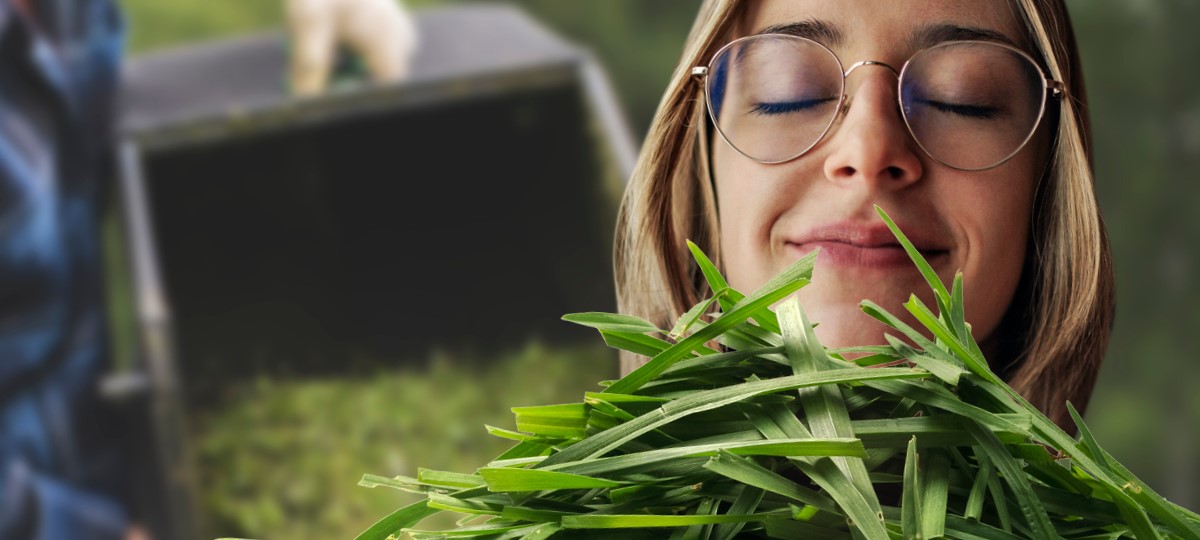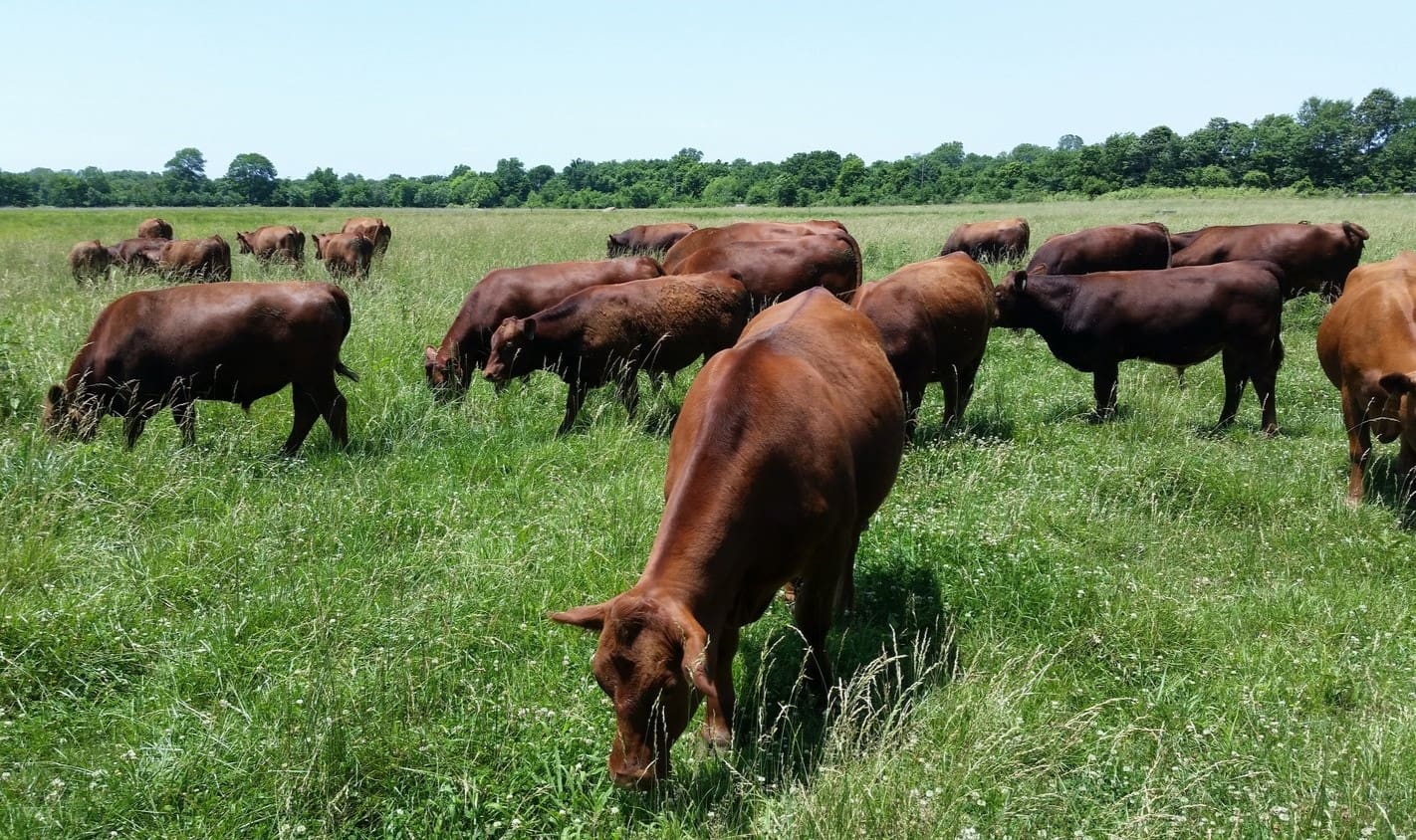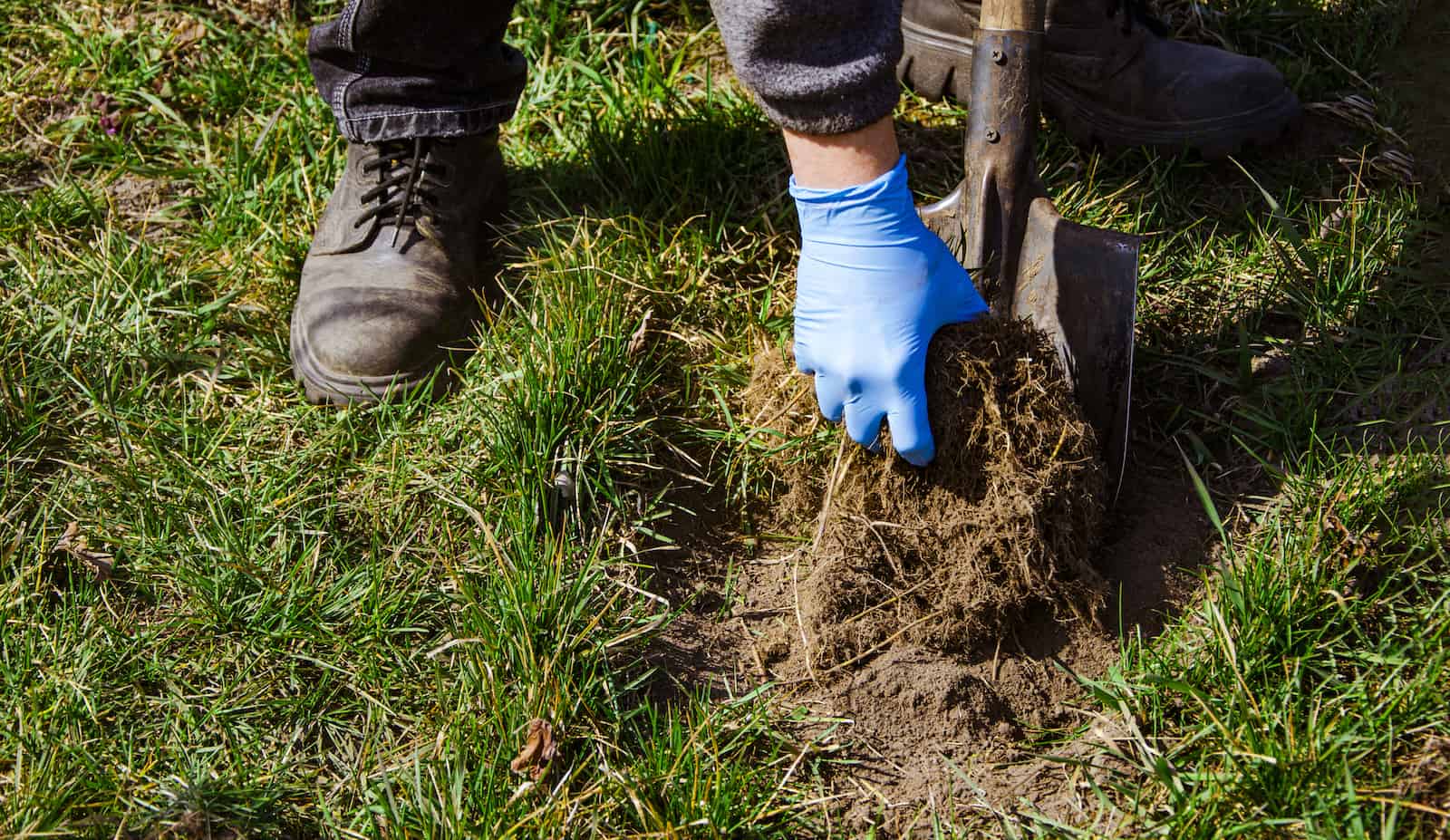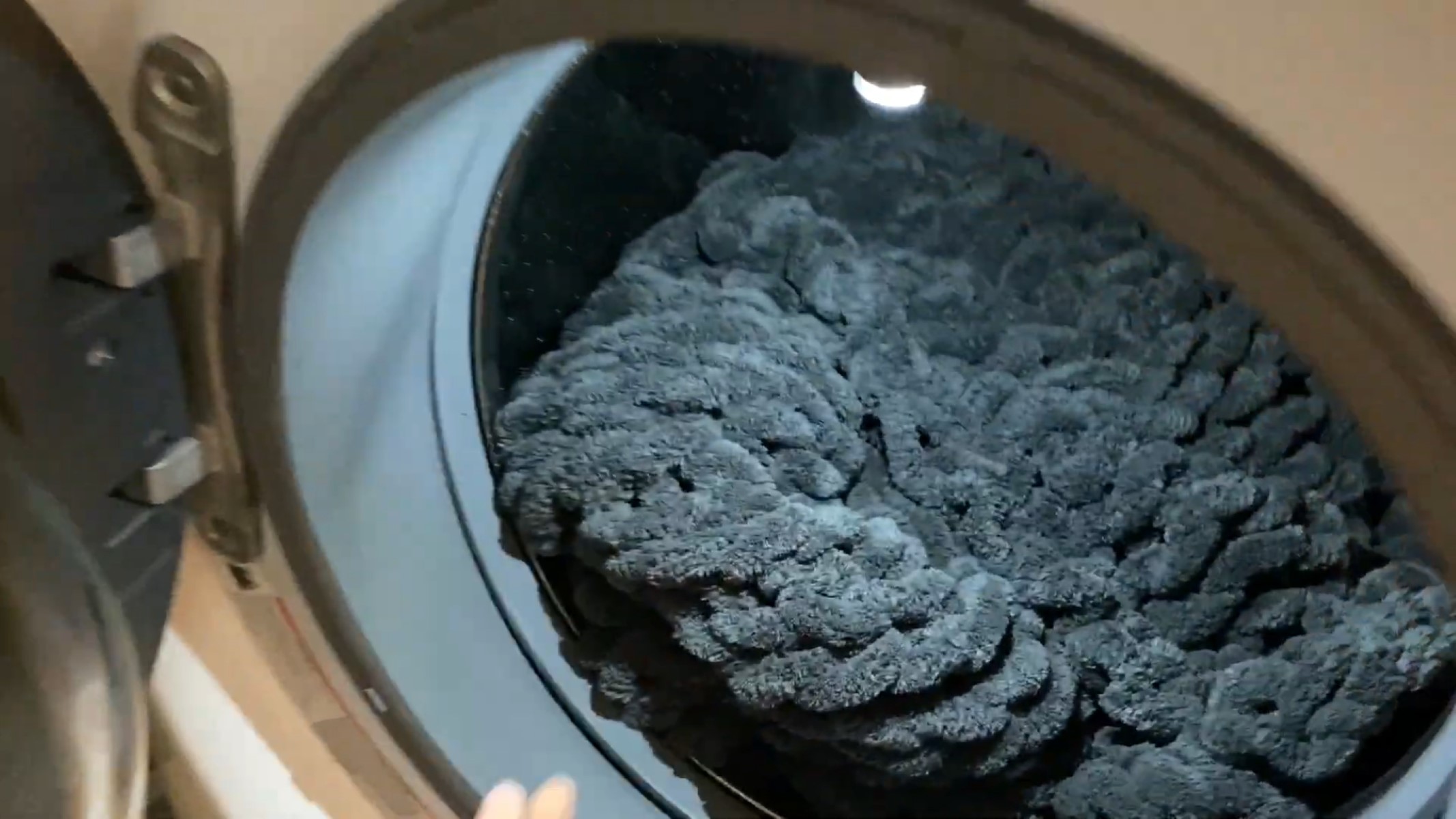Home>Gardening & Outdoor>Landscaping Ideas>Why Does Cut Grass Smell


Landscaping Ideas
Why Does Cut Grass Smell
Modified: March 27, 2024
Discover the science behind the pleasant smell of freshly cut grass and explore landscaping ideas for your outdoor space. Learn why grass smells and how to enhance your landscaping experience.
(Many of the links in this article redirect to a specific reviewed product. Your purchase of these products through affiliate links helps to generate commission for Storables.com, at no extra cost. Learn more)
**
Introduction
**
Picture this: it's a warm, sunny day, and you step outside into your backyard. As you take a deep breath, a familiar, pleasant aroma fills your senses. That delightful smell is none other than the fragrance of freshly cut grass. Have you ever wondered why the act of mowing the lawn releases such a delightful scent? In this article, we'll delve into the captivating world of grass aroma, exploring the science behind why cut grass smells so good.
The unmistakable scent of cut grass has the remarkable ability to evoke feelings of nostalgia, tranquility, and the joys of outdoor living. Whether you're a gardening enthusiast, a nature lover, or simply someone who appreciates the great outdoors, understanding the origins of this delightful fragrance adds a fascinating layer to your sensory experience.
In the following sections, we'll embark on a journey through the intricate chemistry, biology, and environmental factors that contribute to the beloved smell of freshly mown grass. From the chemical compounds responsible for the aroma to the role of microorganisms and the influence of environmental and evolutionary factors, we'll uncover the captivating secrets behind this beloved olfactory delight. So, let's venture into the world of cut grass scent and uncover the captivating science that makes it so irresistible.
**
Key Takeaways:
- The delightful smell of cut grass comes from chemical compounds released when grass is mowed, creating a nostalgic and tranquil outdoor experience.
- Microorganisms and environmental factors also contribute to the grassy aroma, adding layers of complexity to the scent and enhancing our connection to nature.
Read more: Why Does Grass Smell
The Science of Grass Smell
**
The alluring scent of cut grass is not merely a pleasant byproduct of lawn maintenance; rather, it is a result of a complex interplay of scientific processes. The phenomenon of grass smell can be attributed to a combination of chemical compounds, biological interactions, and environmental influences.
At the heart of the science of grass smell lies a group of organic compounds known as green leaf volatiles (GLVs). When grass is cut, these GLVs are released into the air, creating the distinctive aroma that captivates our senses. These compounds are part of the plant's natural defense system, serving as a means of communication and protection against herbivores and potential threats.
Furthermore, the mechanical action of mowing grass leads to the rupture of plant cells, releasing a burst of volatile organic compounds (VOCs) into the atmosphere. These VOCs, including substances such as hexenal and hexenol, contribute to the characteristic fragrance of freshly cut grass. The release of these compounds is a testament to the intricate chemical processes occurring within the plant, resulting in the delightful olfactory experience that accompanies lawn maintenance.
As we unravel the science behind grass smell, it becomes evident that the captivating aroma is a product of the intricate biological mechanisms inherent in the plant kingdom. The next section will delve deeper into the specific chemical compounds responsible for the enchanting scent of cut grass, shedding light on the fascinating world of organic chemistry within the realm of landscaping and horticulture.
**
Chemical Compounds in Cut Grass
**
Delving into the world of cut grass aroma unveils a captivating array of chemical compounds that contribute to its distinctive scent. The release of these compounds during the process of mowing grass is responsible for the beloved fragrance that fills the air.
One of the key groups of compounds that play a pivotal role in the olfactory allure of cut grass is the green leaf volatiles (GLVs). These organic compounds, including substances such as hexanal, hexenol, and pentenol, are released when plant tissues are damaged. In the context of lawn maintenance, the act of mowing grass leads to the disruption of cell structures, triggering the release of these aromatic molecules into the atmosphere.
Furthermore, the specific chemical composition of these compounds contributes to the recognizable scent of freshly cut grass. For instance, hexanal, also known as leaf aldehyde, is a significant contributor to the aroma and is associated with the characteristic “green” scent that is often described as fresh and invigorating. On the other hand, hexenol, with its slightly sweet and herbaceous aroma, adds depth and complexity to the overall olfactory profile of cut grass.
Moreover, the release of these chemical compounds is not only a sensory delight for humans but also serves as a form of chemical communication within the plant kingdom. The emission of volatile organic compounds (VOCs) acts as a signaling mechanism, allowing plants to convey information about their condition and interact with the surrounding environment. This intricate chemical dialogue underscores the multifaceted nature of the scents we encounter in the natural world.
As we unravel the chemical compounds responsible for the captivating scent of cut grass, it becomes evident that the fragrance is a testament to the intricate interplay of organic molecules and biological processes. In the subsequent sections, we will explore the role of microorganisms in further shaping the olfactory experience associated with freshly mown lawns, shedding light on the fascinating symbiosis between plants and microorganisms in outdoor environments.
**
The smell of cut grass comes from a compound called green leaf volatiles, which are released when the grass is cut and damaged. This compound is a mix of chemicals that give off the fresh, pleasant smell we associate with freshly cut grass.
The Role of Microorganisms
**
While the enchanting scent of cut grass is primarily attributed to the release of organic compounds from the plant itself, the role of microorganisms in shaping this olfactory experience should not be overlooked. Within the intricate ecosystem of the lawn, microorganisms play a significant role in modulating the scent profile and contributing to the overall aromatic richness of the environment.
One of the key players in the realm of grass scent is a group of microorganisms known as actinomycetes. These filamentous bacteria are ubiquitous in soil and are particularly active in the aftermath of lawn mowing. Actinomycetes are responsible for the earthy, musky undertones that complement the fresh, green aroma of cut grass. Their metabolic activities result in the production of geosmin, a compound that imparts an earthy scent often associated with the pleasant smell of damp soil and the outdoors.
Additionally, the presence of fungi contributes to the olfactory tapestry of the lawn environment. Fungal activity following the mowing of grass contributes to the release of aromatic compounds, adding layers of complexity to the overall scent profile. The interplay between microorganisms and the plant matter in the lawn creates a dynamic aromatic symphony that enhances the sensory experience of being outdoors.
Furthermore, the decomposition of grass clippings by microbial communities leads to the release of additional volatile organic compounds, further enriching the olfactory landscape of the lawn. This intricate process underscores the dynamic relationship between the living organisms within the lawn ecosystem and the captivating scents that accompany outdoor activities such as lawn maintenance and leisurely strolls through green spaces.
Understanding the role of microorganisms in shaping the scent of cut grass provides a deeper appreciation for the multifaceted nature of the outdoor olfactory experience. The next section will delve into the environmental and evolutionary factors that have contributed to the development of the distinctive grass scent, shedding light on the fascinating interplay between nature and sensory perception.
**
Environmental and Evolutionary Factors
**
The captivating scent of cut grass is not only a product of chemical and biological processes but is also influenced by environmental and evolutionary factors that have shaped the olfactory characteristics of grasses over time. The interplay between the natural environment and the evolutionary adaptations of plants has contributed to the development of the delightful fragrance associated with freshly mown lawns.
One of the key environmental factors that influence the scent of cut grass is sunlight. Grasses, as part of their natural adaptation to the environment, produce a range of chemical compounds that serve various ecological functions, including protection against environmental stressors such as excessive sunlight. When grass is mowed, these compounds are released, contributing to the overall scent that fills the air. This interaction between sunlight and the chemical composition of grasses underscores the intricate relationship between environmental factors and olfactory experiences.
Moreover, the evolutionary history of grasses has played a crucial role in shaping the scent profile that we find so appealing. Over time, grasses have developed chemical defenses and communication mechanisms to interact with their surroundings and respond to external stimuli. The release of volatile organic compounds upon mowing represents a form of chemical signaling that has evolved as a means of defense and adaptation within the plant kingdom.
Furthermore, the aromatic compounds released by grasses serve ecological functions, such as deterring herbivores and attracting beneficial organisms. This intricate interplay between the evolutionary adaptations of grasses and their chemical communication with the environment has contributed to the development of the distinctive scent that we associate with well-maintained lawns and natural landscapes.
Additionally, the human perception of the scent of cut grass is deeply rooted in cultural and sensory experiences. The association of the grassy aroma with outdoor activities, leisure, and natural beauty has contributed to its widespread appeal and the positive emotions it evokes. The scent of cut grass has become a symbol of outdoor enjoyment and a connection to nature, further enriching its significance in human sensory perception.
As we explore the environmental and evolutionary factors that have shaped the scent of cut grass, we gain a deeper understanding of the intricate relationship between plants, their surroundings, and the sensory experiences that enrich our connection to the natural world.
**
Read more: What Does Freshly Cut Grass Smell Like
Conclusion
**
The enchanting scent of cut grass is a testament to the captivating intersection of science, nature, and sensory perception. As we have journeyed through the intricate world of grass aroma, we have uncovered the multifaceted factors that contribute to this beloved olfactory experience.
From the chemical compounds released by the mechanical action of mowing to the role of microorganisms in shaping the aromatic landscape, the science of grass smell reveals a rich tapestry of biological and ecological interactions. The presence of green leaf volatiles and the earthy undertones contributed by microorganisms underscore the dynamic nature of the outdoor olfactory experience.
Furthermore, the environmental and evolutionary factors that have influenced the development of the grass scent shed light on the deep-rooted connection between plants, their surroundings, and human sensory perception. The scent of cut grass serves as a reminder of the intricate relationship between the natural world and our sensory experiences, evoking feelings of nostalgia, tranquility, and a profound connection to nature.
Ultimately, the fragrance of freshly mown grass transcends its chemical and biological origins, becoming a symbol of outdoor enjoyment, leisure, and the beauty of the natural world. Its widespread appeal and positive associations have made it a cherished element of the human sensory experience, enriching our connection to the great outdoors and the simple pleasures of life.
As we continue to savor the delightful scent of cut grass in our everyday lives, let us embrace the profound beauty of this natural phenomenon and the intricate science that makes it so irresistible. Whether it evokes memories of childhood summers, peaceful afternoons in the garden, or simply a moment of sensory bliss, the scent of cut grass remains a timeless and cherished aspect of our sensory landscape.
Frequently Asked Questions about Why Does Cut Grass Smell
Was this page helpful?
At Storables.com, we guarantee accurate and reliable information. Our content, validated by Expert Board Contributors, is crafted following stringent Editorial Policies. We're committed to providing you with well-researched, expert-backed insights for all your informational needs.















0 thoughts on “Why Does Cut Grass Smell”